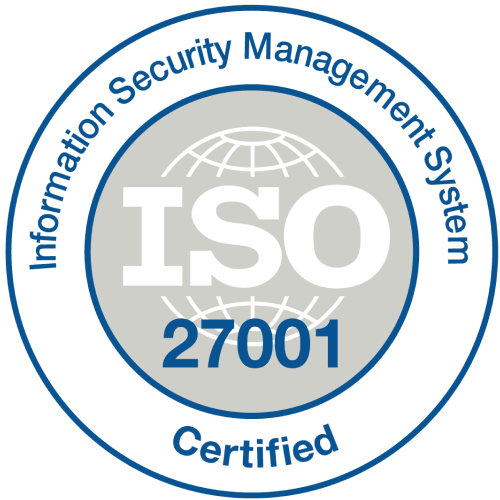
What is a matrix organization?
A matrix organization is a company or management structure where employees report to multiple managers instead of just one. Unlike traditional hierarchies, where authority flows in a straight line, a matrix organizational structure blends functional and project-based leadership.
This allows businesses to allocate resources efficiently, enhance collaboration, and ensure specialized expertise is used effectively across different teams. However, managing dual reporting lines requires clear communication and defined responsibilities.
In a matrix org structure, employees typically have two reporting relationships—one to a functional manager overseeing their department and another to a project or product manager guiding specific initiatives. This system is common in industries requiring agility and expertise from multiple disciplines, such as technology, healthcare, and consulting.
There are different types of matrix organizations, including strong matrix organization examples, where project managers hold more authority, and balanced matrix organizations, where power equal authority is equally distributed. Each variation offers unique advantages but also challenges, such as conflicting priorities and potential confusion over decision-making.
Key takeaways from the blog
- A matrix organization model enhances collaboration by allowing employees to report to both functional and project managers. This structure improves efficiency but requires strong leadership and clear communication.
- While a matrix company structure offers flexibility, it can create challenges like role confusion and decision-making delays. Proper governance and defined responsibilities help mitigate these issues.
- Industries like technology, healthcare, and aerospace benefit most from a matrix org structure. Businesses must assess their needs before adopting this model to ensure it aligns with their operational goals.
How do matrix organizations work?
A matrix organization operates through a dual-reporting structure where employees work under multiple managers. This setup enhances collaboration, improves efficiency, and allows businesses to leverage specialized skills across different functions. However, managing competing priorities and maintaining clear communication are essential for success.
Let’s break down how matrix organizations function in the workplace.
1. Dual reporting structure
Employees report to both a functional manager for department-related work and a project manager for specific project objectives and initiatives. This ensures alignment with organizational goals while maintaining project efficiency. However, without clear communication, conflicting directives can create confusion. Strong coordination between leaders is necessary to balance responsibilities effectively.
2. Cross-functional teams
Matrix organizations rely on cross-functional teams that bring together employees from various departments. These teams improve collaboration, speed up decision-making, and foster innovation by combining diverse perspectives. However, success depends on how team members work, establishing clear workflows to prevent bottlenecks. Strong leadership ensures that projects run smoothly without departmental silos.
3. Dynamic resource allocation
Instead of being assigned to a single role, employees shift between projects based on business needs. This makes organizations more agile, enabling them to adapt to changing priorities. However, workload management must be handled carefully to prevent burnout. Proper planning and transparent communication ensure that resources are allocated efficiently.
4. Clear roles and responsibilities
Defining responsibilities is crucial in a matrix organization model to avoid confusion over decision-making authority. Employees must understand their roles in both functional and project-based teams. Clear reporting structures, regular check-ins, and documented processes help streamline operations. This clarity prevents overlaps in tasks and enhances accountability.
5. Performance evaluation challenges
Since employees have multiple reporting lines, performance assessments require input from different managers. Aligning feedback ensures fair evaluations and helps employees set clear development goals. However, if not managed well, conflicting assessments among team reports can create frustration. A structured review process is necessary to provide employees with constructive and balanced feedback.
How does a matrix organization differ from a traditional hierarchy?
A matrix organization differs from a traditional hierarchy by introducing a dual-reporting structure, whereas hierarchies follow traditional structures with a clear chain of command. This shift enhances collaboration and flexibility but also requires careful coordination. Below is a comparison of both structures across key aspects.
Types of matrix management
Matrix management comes in different forms, depending on how authority is distributed between functional and project managers. Each type balances leadership control differently, impacting decision-making and workflow efficiency. Below are the three main types of matrix management and how they function.
1. Weak matrix management
In a weak matrix organization, functional managers hold the most authority, while project managers have limited control. Employees primarily follow their functional department’s priorities, with project managers acting as coordinators rather than decision-makers. This structure is close to a traditional hierarchy but with some cross-functional collaboration.
2. Balanced matrix management
A balanced matrix organization shares authority equally between the department head and functional and project managers. Employees receive guidance from both, requiring strong coordination to avoid conflicts. This model fosters collaboration while maintaining departmental expertise, but clear role definitions are necessary to prevent leadership struggles.
3. Strong matrix management
A strong matrix organization example places greater control in the hands of project managers. They make key decisions, allocate resources, and oversee execution, while functional managers provide support. This model enhances project efficiency but may create tension if functional leaders feel sidelined.
What is project vs matrix organisation?
A project organization focuses on completing specific projects with dedicated teams, while a matrix organization integrates employees across multiple projects and departments. The key difference lies in authority distribution—project-based structures centralize control, whereas matrix models balance it.
Below is a comparison of both structures across key aspects.
Advantages of the matrix organization structure
A matrix organization structure offers businesses a flexible and collaborative approach to management. By integrating employees across multiple departments and projects, it enhances efficiency, innovation, and resource utilization. However, successful implementation requires clear communication and strong leadership. Here are the key advantages of a matrix organizational structure.
- Enhanced collaboration: Cross-functional teams bring together expertise from different departments, leading to better problem-solving. Employees share knowledge and skills, fostering innovation and improving decision-making. This collaborative approach ensures well-rounded project outcomes.
- Efficient resource utilization: A matrix org structure optimizes talent allocation by assigning employees to multiple projects as needed. Instead of being restricted to one department, staff members contribute where their expertise is most valuable. This flexibility reduces redundancy and maximizes efficiency.
- Greater adaptability: Unlike rigid hierarchies, matrix organizations adjust quickly to changing market demands. Employees can be reassigned to high-priority projects, ensuring business agility. This responsiveness helps companies remain competitive in fast-paced industries.
- Skill development opportunities: Employees in a matrix company structure gain exposure to diverse tasks and leadership styles. Working across multiple teams enhances their adaptability, problem-solving abilities, and leadership skills. This experience accelerates professional growth and career advancement.
- Stronger project management: With dedicated project managers, a matrix structure ensures that tasks are completed on time and within scope. Project managers oversee execution while functional managers provide technical expertise. This dual-management system enhances accountability and project success rates.
- Encourages innovation: By merging diverse perspectives, a matrix organization model fosters creativity and innovation. Employees from different backgrounds collaborate, generating fresh ideas and solutions. This dynamic environment supports continuous improvement and competitive advantage.
- Increased employee engagement: Working on varied projects in a matrixed organization keeps employees motivated and engaged. Exposure to different teams and challenges prevents monotony, making work more stimulating. Higher engagement leads to better performance and job satisfaction.
Drawbacks of the matrix organization structure
While a matrix organizational structure offers flexibility and collaboration, it also presents challenges that businesses must navigate. Managing dual reporting, balancing authority, and maintaining efficiency can be complex. Below are the key drawbacks of a matrix organization design and model that companies should consider before implementation.
- Role confusion and conflict: In a matrix org structure, employees report to multiple managers, leading to confusion over priorities. Conflicting instructions from project and functional managers can create tension, slowing down decision-making and execution. Clear role definitions are essential to minimize misunderstandings.
- Complex decision-making: With multiple stakeholders involved, decisions in matrix organizations often take longer. Managers must align priorities across departments, which can result in bureaucracy. This complexity may slow response times in fast-moving industries.
- Increased workload and stress: Employees in a matrixed organization juggle multiple projects simultaneously, which can lead to burnout. Dividing attention across different tasks reduces focus and productivity. Strong workload management is necessary to prevent exhaustion and maintain efficiency.
- Power struggles between managers: A balanced matrix organization requires functional and project managers to share authority, which can cause leadership conflicts. Disputes over decision-making power can disrupt workflow and hinder productivity. Clear communication and conflict resolution strategies are essential.
- Difficult performance evaluations: Since employees work under multiple managers, assessing their performance becomes challenging. A matrix organizational structure requires coordination between managers to provide fair and constructive feedback. Without a well-defined evaluation system, employees may feel undervalued.
- High management overhead: Managing a matrix company structure demands additional coordination, meetings, and administrative work. More time is spent aligning priorities and resolving conflicts, increasing operational costs. This can be inefficient for businesses with limited resources.
- Resistance to change: Transitioning to a matrix organization model can be difficult, especially in companies used to traditional hierarchies. Employees may struggle with shifting responsibilities, and managers may resist sharing authority. Proper training and change management strategies are crucial for a smooth transition.
Who uses a matrix organization?
A matrix organizational structure is widely adopted across industries that require agility, cross-functional collaboration, and efficient resource allocation. It is particularly beneficial for companies managing multiple projects, global operations, or innovation-driven workflows. Below are key industries and businesses that use a matrix organization model.
- Technology and IT companies: Tech giants like Google and Microsoft operate in a matrixed organization, allowing employees to work on multiple projects simultaneously. Engineers, designers, and product managers collaborate across different teams to accelerate product development and innovation.
- Healthcare and pharmaceuticals: Organizations like Pfizer and Johnson & Johnson use a matrix organizational structure to coordinate research, manufacturing, and regulatory compliance. Teams from different regions and specializations work together on drug development and clinical trials.
- Aerospace and defense: Companies like Boeing and Lockheed Martin implement a matrix org structure to manage large-scale defense and aerospace projects. Engineers, project managers, and functional leaders collaborate across departments to meet strict deadlines and quality standards.
- Consulting firms: Firms like McKinsey & Company and Deloitte use a matrix company structure to allocate consultants based on client needs. Employees often report to both a project leader and a functional manager, ensuring expertise is shared across engagements.
- Manufacturing and automotive: Car manufacturers like Toyota and Ford use a balanced matrix organization to streamline production, R&D, and supply chain management. Teams coordinate across different plants and regions to optimize efficiency and product quality.
- Financial services and banking: Large banks like JP Morgan and Citibank utilize a matrix organizational structure to align product development, customer service, and regulatory compliance across global markets. This structure ensures efficient operations while adapting to local financial regulations.
How do you build a matrix organization?
Building a matrix organization model requires strategic planning, clear communication, and well-defined roles. Companies must balance authority, streamline collaboration, and ensure employees adapt to dual reporting structures. Here are the essential steps to successfully establish a matrix organizational structure.
1. Define clear objectives and business needs
Start by identifying why a matrix org structure is necessary and how it aligns with company goals. Assess your organization's need for cross-functional collaboration, agility, and resource optimization. Establish clear expectations for teams and leadership.
2. Establish reporting relationships
Clearly define how employees will report to both functional and project managers. A balanced matrix organization ensures knowledge sharing authority is distributed effectively without causing confusion. Set guidelines to resolve conflicts between different leadership levels.
3. Assign roles and responsibilities
Outline the duties of project managers, functional leaders, and project team, members. A well-structured matrix company structure minimizes role ambiguity and ensures accountability. Provide role-specific training to ease the transition.
4. Strengthen communication channels
Encourage open communication and collaboration between departments to avoid bottlenecks. A matrixed organization requires regular check-ins, clear documentation, and effective feedback loops. Implement tools like project management software to streamline coordination.
5. Align performance metrics and rewards
Since employees report to multiple managers, create an evaluation system that reflects contributions across teams. A fair performance review process in a matrix organization model prevents conflicts and keeps employees motivated.
6. Train employees and leaders
Successful matrix organizations require strong leadership skills and adaptability. Provide training on conflict resolution, decision-making, and role management. Helping employees navigate dual reporting structures ensures smooth operations.
7. Continuously monitor and improve
Regularly assess the effectiveness of your matrix organizational structure through feedback and performance analysis. Address challenges like power struggles, slow decision-making, and workload imbalances. Adapt and refine the strong organizational structure as business needs evolve.
Implementing a matrix organization: Best practices for HR leaders
Implementing a matrix organizational structure requires HR leaders to manage complexities, ensure role clarity, and support employee adaptability. A well-executed matrix org structure enhances collaboration but needs strong leadership to prevent confusion and inefficiencies. Here are five best practices HR leaders can follow for a smooth transition.
- Establish clear governance and decision-making: Define authority levels for functional and project managers to avoid conflicts. A balanced matrix organization thrives on well-defined decision-making protocols. Ensure employees understand reporting structures and escalation processes.
- Develop strong communication and collaboration channels: Encourage transparency through structured meetings, shared digital tools, and open discussions. A matrix organization model requires seamless information flow to prevent silos. HR should foster a culture of collaboration across departments.
- Provide leadership and conflict resolution training: Since employees have multiple managers, leadership training is crucial. Equip managers with skills to navigate power dynamics and resolve conflicts. Effective leadership ensures a matrix company structure operates smoothly.
- Align performance evaluations and incentives: Develop a fair system that assesses contributions across different teams. A well-structured matrixed organization rewards collaboration rather than individual silos. Performance metrics should reflect both functional and project-based achievements.
- Monitor, adapt, and improve continuously: Regularly assess the effectiveness of the matrix organizational structure through employee feedback and performance metrics. Identify and address roadblocks before they disrupt productivity. HR should refine strategies to maintain an efficient matrix organizations framework.
FAQs
1. What industries benefit most from a matrix organizational structure?
Industries that require cross-functional collaboration, innovation, and efficient resource management benefit the most. These include technology, aerospace, healthcare, finance, consulting, and manufacturing. A matrix organizational structure helps companies handle multiple projects, global operations, and rapid market changes by ensuring expertise is shared across departments while maintaining agility, responsiveness, and strategic alignment with business goals.
2. What are some common challenges of managing a matrix organization?
Managing a matrix org structure presents challenges like unclear authority, conflicting priorities, and decision-making delays. Employees may struggle with dual reporting, causing confusion and inefficiencies. Power struggles between functional and project managers can slow progress. To succeed, organizations need strong communication, leadership training, and decision making processes and clearly defined performance metrics to ensure smooth operations.
3. Can new businesses adopt a matrix organizational structure?
Yes, but it depends on complexity, scale, and leadership capability. A matrix organization model works well for businesses managing diverse projects or global teams. However, startups may struggle with role ambiguity and bureaucratic inefficiencies. A phased approach, clear reporting lines, and structured collaboration help new businesses implement it successfully while avoiding unnecessary complexity that may hinder early-stage growth.
4. What is an example of a matrix structure company?
Companies like Google, IBM, and General Electric use a matrix company structure to manage employees across multiple projects while maintaining functional leadership. Google, for example, assigns employees to both product teams and functional managers, ensuring collaboration between engineering, marketing, and research. This approach enhances efficiency, innovation, and agility in complex, fast-changing industries.
5. What is a strong matrix organization?
A strong matrix organization example gives project managers more control over budgets, resource allocation, and decision-making than functional managers. This structure ensures faster execution, clearer accountability, and greater flexibility in responding to project needs. Functional managers provide expertise, but project leaders drive strategic direction, making this model ideal for fast-paced, innovation-driven industries requiring high efficiency and adaptability.
Empower, Engage & Succeed with the Complete Employee Engagement Software
DISCOVER NOWGet breaking news and curated stories delivered to your inbox every day. Be the first to know what’s happening around the world



.svg)















.png)

